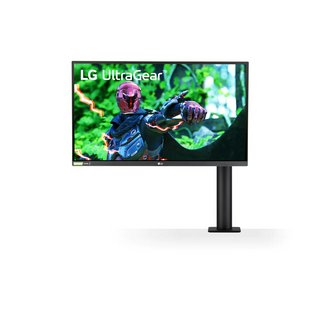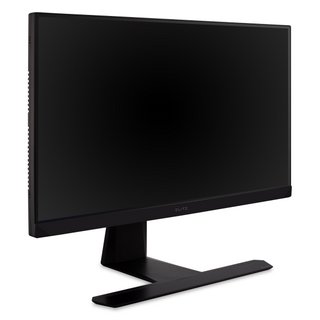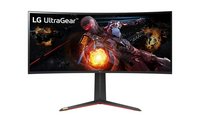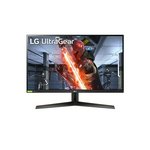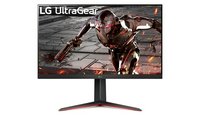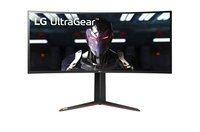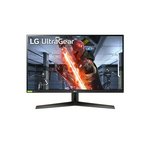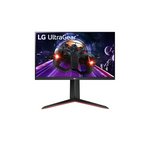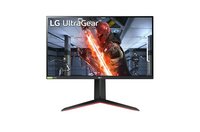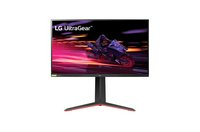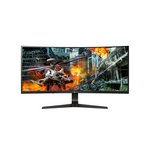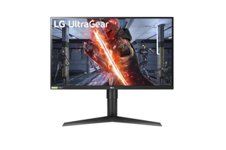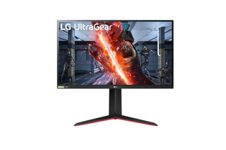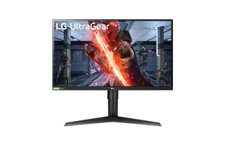Compare LG 27GN880 vs ViewSonic XG271QG
Connectivity
Ports
1x 3.5 mm Audio Out, 2x HDMI 2.0, 1x DisplayPort 1.4
2x HDMI 2.0, 1x DisplayPort 1.2, 1x 3.5 mm Audio Out, 2x USB 3.1 (Type-A; downstream), 1x USB 3.1 (Type-B; upstream)
Construction
Adjustment | Height
130 mm / 5.1181 in
120 mm / 4.7244 in
Adjustment | Pivot
-90° ~ 90°
N/A
Adjustment | Swivel
-280° ~ 280°
-25° ~ 25°
Adjustment | Tilt
-25° ~ 25°
-5° ~ 20°
Camera
No
No
Colors
Black
Black
VESA Mount
100 x 100 mm
100 x 100 mm
Dimensions
Bezels
89.39% screen-to-body ratio
Size | Depth
2.2 in / 55.88 mm w/o stand, 16.2 in / 411.48 mm w/ stand
Size | Height
14.4 in / 365.76 mm w/o stand, 19.08 in / 484.68 mm w/ stand
Size | Width
24.2 in / 614.68 mm
Weight
4.22 kg / 9 lbs w/o stand , 8.12 kg / 18 lbs w/ stand
Display
Aspect Ratio
16:9
16:9
Brightness
280 nits / 350 nits (peak)
Contrast Ratio
1000:1 (static)
1000:1 (static)
Display Backlight
W-LED
W-LED
Display Color Depth
10 bits (8 bits + FRC), 1073741824 colors
10 bits (8 bits + FRC), 1073741824 colors
Display Diagonal
27" (27 in / 685.8 mm)
27" (27 in / 685.9 mm)
Display Type
IPS, Anti-glare/Matte (3H)
IPS, Anti-glare/Matte (3H)
Gamut
98% DCI-P3
99% Adobe RGB
Input Lag
4 ms
Pixel Density
108 ppi
109 ppi
Pixel Pitch
0.233 mm
0.233 mm
Refresh Rate
48 Hz ~ 144 Hz
48 Hz ~ 240 Hz
Resolution
QHD (2560x1440)
QHD (2560x1440)
Response Time
1 ms (min) / 4 ms (avg)
1 ms (min)
Viewing Angle
178° H / 178° V
178° H / 178° V
Function
HDR
HDR10
DisplayHDR 400
Licenses
cTUVus, FCC-B, ICES003, CEC, MX-CoC, Mexico Energy
Operating Humidity
10 % ~ 80 %
20 % ~ 90 %
Operating Temperature
0 °C ~ 40 °C , 32 °F ~ 104 °F
0 °C ~ 40 °C , 32 °F ~ 104 °F
Variable Framerate
NVIDIA G-SYNC, AMD FreeSync
NVIDIA G-SYNC
Video
Black Stabilizer, Wide Color Gamut, Smart Energy Saving, Color Calibrated, Low Blue Light, Crosshair, Dynamic Action Sync, Reader Mode, Nano IPS, Dual Controller, Color Weakness Mode, Adaptive-Sync technology, Flicker-free technology, HDR Effect
Elite Design Enhancements, Elite RGB Lights, Metal-1 Base with cable management, NVIDIA Reflex Latency Analyzer, Headphone Hook, 3-side Borderless Design, Built-in Mouse Anchor
Performance
Power Consumption
51 W (average) / 55 W (max) / 0.5 W (sleep) / 0.3 W (off)
0.5 W (sleep)
Production
Accessory
DC Extension cable, HDMI cable, USB Type-C cable
Debut
2020
2021
Reviews
Neofiliac score
90%
88%
Pros
- Rich color reproduction
- Stand with tilt, swivel, pivot, and height adjustments
- Fast 1 ms response time
- High 1000:1 contrast ratio
- 10-bit display panel
- Support for NVIDIA G-SYNC
- DisplayHDR 400
- Stand with tilt, swivel, and height adjustments
- Fast 1 ms response time
- High 1000:1 contrast ratio
- 10-bit display panel
- Support for NVIDIA G-SYNC
- 240 Hz refresh rate
Cons
Remove
Remove
Add up to 4 products to the comparison using the search bar above
Information on this page is provided on an as-is basis. No warranty on accuracy is implied. This page may contain affiliate links to third-party merchants such as Amazon and eBay. If you make a purchase using the supplied link, we may receive a commission. Neofiliac places the utmost respect for your privacy. We use no cookie whatsoever beyond that needed for the proper functioning of the website.
